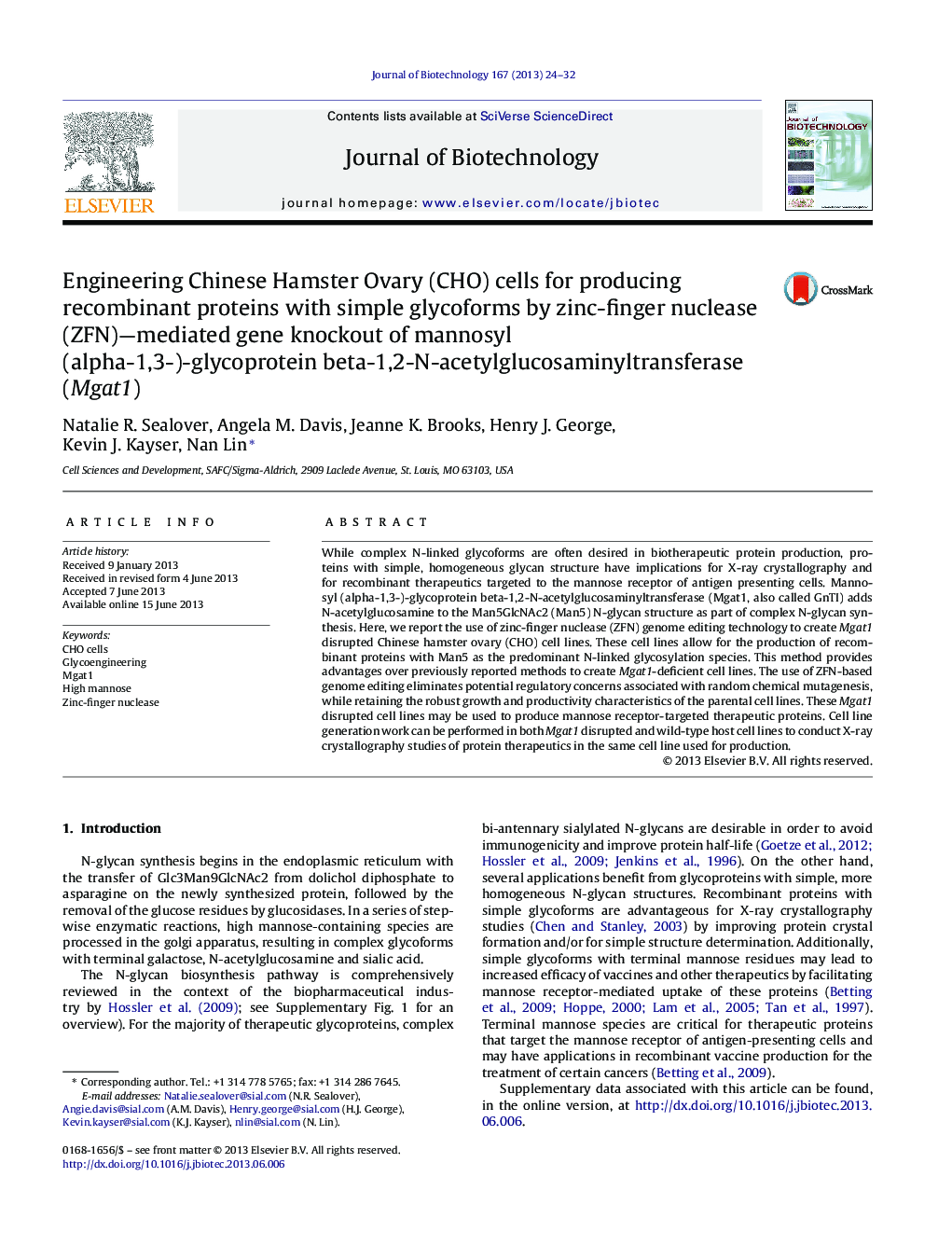| کد مقاله | کد نشریه | سال انتشار | مقاله انگلیسی | نسخه تمام متن |
|---|---|---|---|---|
| 23546 | 43451 | 2013 | 9 صفحه PDF | دانلود رایگان |

• Zinc-finger nuclease (ZFN)-mediated genome editing was used to generate Mgat1-deficient CHO cell lines.
• These cell lines allow for the production of recombinant proteins with Man5 as the predominant N-linked glycosylation species.
• This method eliminates off-target effects and potential regulatory concerns associated with random chemical mutagenesis, while retaining the robust growth and productivity characteristics of the parental cell lines.
• These Mgat1 disrupted cell lines may be used to produce mannose receptor-targeted therapeutic proteins.
While complex N-linked glycoforms are often desired in biotherapeutic protein production, proteins with simple, homogeneous glycan structure have implications for X-ray crystallography and for recombinant therapeutics targeted to the mannose receptor of antigen presenting cells. Mannosyl (alpha-1,3-)-glycoprotein beta-1,2-N-acetylglucosaminyltransferase (Mgat1, also called GnTI) adds N-acetylglucosamine to the Man5GlcNAc2 (Man5) N-glycan structure as part of complex N-glycan synthesis. Here, we report the use of zinc-finger nuclease (ZFN) genome editing technology to create Mgat1 disrupted Chinese hamster ovary (CHO) cell lines. These cell lines allow for the production of recombinant proteins with Man5 as the predominant N-linked glycosylation species. This method provides advantages over previously reported methods to create Mgat1-deficient cell lines. The use of ZFN-based genome editing eliminates potential regulatory concerns associated with random chemical mutagenesis, while retaining the robust growth and productivity characteristics of the parental cell lines. These Mgat1 disrupted cell lines may be used to produce mannose receptor-targeted therapeutic proteins. Cell line generation work can be performed in both Mgat1 disrupted and wild-type host cell lines to conduct X-ray crystallography studies of protein therapeutics in the same cell line used for production.
Journal: Journal of Biotechnology - Volume 167, Issue 1, 10 August 2013, Pages 24–32